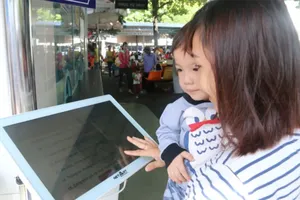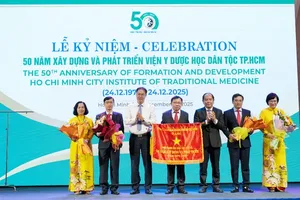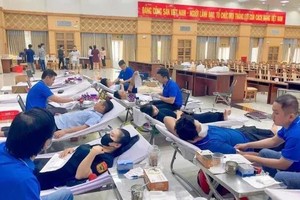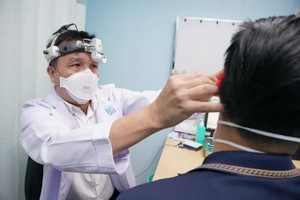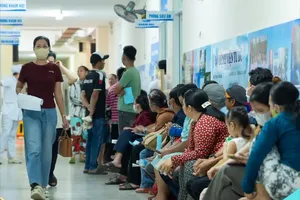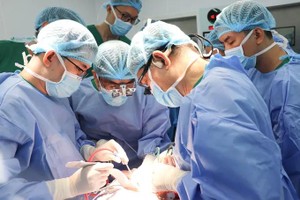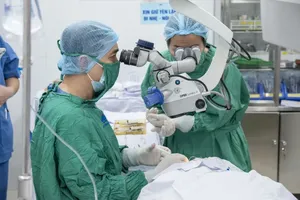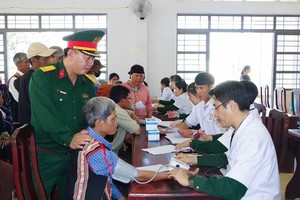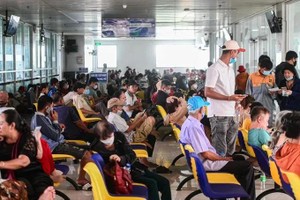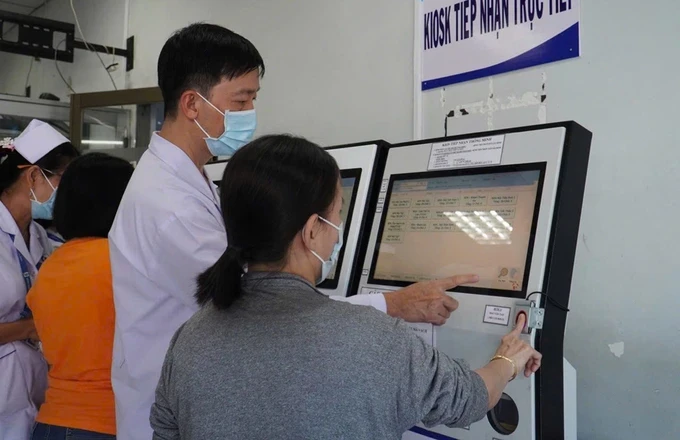
In its first month, the VNeID application's online medicine purchase has been widely praised by consumers for its convenience, safety, security, and expedient processing.
According to experts, the integration of many features on the VNeID application, including online medicine purchase, marks an important step forward in the digital transformation process in the healthcare sector, bringing many significant benefits, helping people save time, reduce costs, monitor comprehensive health and reduce the burden on the healthcare system.
According to Associate Professor Tang Chi Thuong, Director of the Ho Chi Minh City Department of Health, the city's health sector has long promoted the use of technology to build a smart health system, providing increasingly effective and convenient healthcare services to the public.
Ho Chi Minh City University of Medicine and Pharmacy Hospital, Nguyen Tri Phuong Hospital, Hematology and Blood Transfusion Hospital, Hung Vuong Hospital, Gia Dinh People's Hospital have made efforts to convert from paper records to electronic records, helping to store patient information safely, easily retrieve and share between medical facilities.
Many hospitals have also applied telemedicine (remote health consultation) to connect doctors at health stations with specialists at general and specialized hospitals at the city's grassroots medical facilities. In parallel with these advancements, major hospitals are playing an increasingly important role by providing remote professional support to doctors working at small health stations. This crucial support enables healthcare providers at the frontline to effectively address complex or rare medical cases that may fall outside their immediate expertise.
According to the Ho Chi Minh City Department of Health, up to now, most hospitals have applied many digital utilities to optimize the medical examination and treatment process, such as deploying online appointment booking systems, patient information lookup kiosks, smart medical examination registration kiosks and cashless payments.
The Electronic Health Book has been included into the VNeID application, facilitating the integration of data with all medical examination and treatment facilities, and linking with the portal of health insurance appraisal data.
Many hospitals have applied artificial intelligence (AI) to medical examination and treatment activities, initially creating many positive values such as robotic surgery at Binh Dan Hospital, robot application in bone biopsy in hard-to-reach locations at Military Hospital 175. The implementation of AI in imaging diagnostics, such as X-rays, CT scans, and MRIs, across numerous hospitals has not only enhanced the quality and efficiency of imaging but also aids in the early detection of diseases.
The deployment of AI-powered RayStation technology at Ho Chi Minh City Oncology Hospital has significantly enhanced the accuracy and efficiency of radiation therapy planning, reducing treatment times for patients.
Public health management and disease prevention have also been digitized. Since 2016, the geographic information system (GIS) has been deployed at the Ho Chi Minh City Center for Disease Control to monitor and manage infectious diseases, especially dengue fever, Zika, whooping cough, typhoid, diarrhea, the system provides risk warnings at 4 levels to support epidemiological surveillance and outbreak control.
The Ho Chi Minh City Center for Disease Control has so far deployed many applications for screening, disease intervention and digital platforms in the management of people infected with HIV/AIDS, helping to improve the effectiveness of treatment for patients.
Recognizing the transformative potential of technology, the healthcare sector of Ho Chi Minh City has actively pursued its implementation to not only enhance the quality of medical examination and treatment services but also to streamline administrative processes.
A prime example of this technological advancement is the development of a user-friendly medical practice information lookup portal. This innovative platform empowers citizens to easily search for and identify suitable healthcare facilities based on their specific needs, including the desired medical specialty, type of facility, quality of care, and cost considerations, thereby enhancing accessibility and convenience for patients seeking healthcare services.

